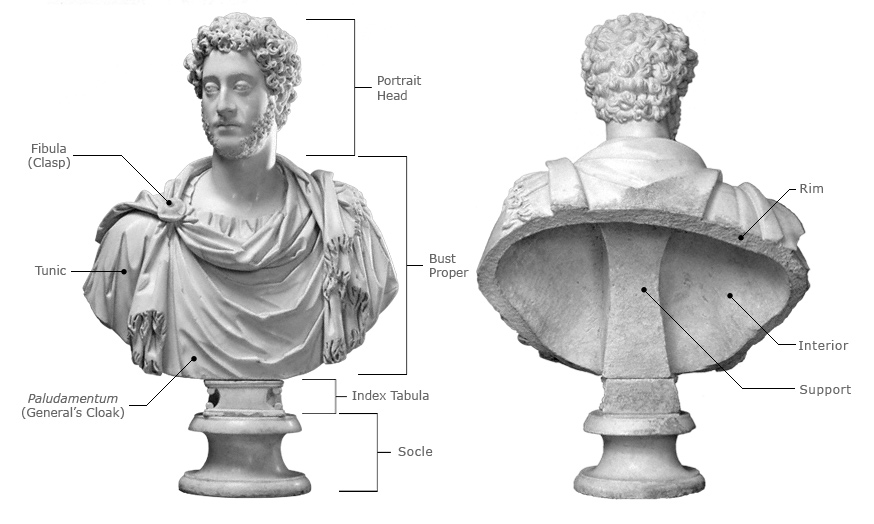|
Viewer's Guide to the Roman Bust In portraiture, busts are abbreviated stand-ins for a figure's full body. Providing the portrait head with visual and physical support, they are also designed to express the sitter's status through clothing (or lack thereof) and other attributes. Busts thus become an integral part of a portrait's message. After centuries of exploration and innovation, the canonical shape of the bust as we know it was developed by Roman stone sculptors in the first half of the 2nd century A.D., and it has essentially not changed since. From bottom to top, busts in stone have, principally, a four-part structure: the base; the nameplate; the bust proper, and, of course, the head. The Getty Commodus is a perfect example of a design that has remained a constant in western art. It can therefore serve as a guide to the elements that make a bust, ancient or modern, and the terms used for them (defined below). |
||
 |
||